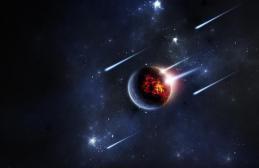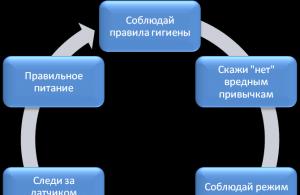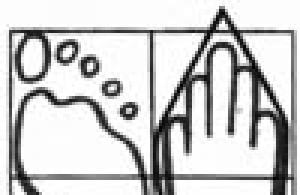Renault engines (Renault) - classification, types and indices, power of all engines installed on Renault cars (Renault), models on which these engines were installed by years.
The names of almost all Renault power plants consist of three characters. The first of which indicates the characteristics of the cylinder block (for example, K - aluminum, F - cast iron). The second is the characteristics of the cylinder head (1-7 gasoline, 8-9 diesel). The third is the volume (the further the letter in the alphabet, the larger it is).
In addition to the name, the engines have an index, it consists of three digits and is written after the name. If the index is even, then such a power plant is designed to work with a manual transmission, if odd, then with an automatic transmission Index series 600,700,800 - internal combustion engine for installation on Renault cars
Renault power units are divided into several lines ...
K-line
| Renault engines | |
|---|---|
| Manufacturer: | Renault |
| Brand: | KxJ |
| Type: | petrol, injection |
| Volume: | 1.4 L (1,390) 1.5 L (1,461) 1.6 L (1,598) cm 3 |
| Configuration: | in-line, four-cylinder |
| Cylinders: | 4 |
| Valves: | 8/16 |
It features in-line 4 cylinder engines. Power units of this type replaced the ExJ line
KxJ gasoline engines
The volume is 1.4 liters.
| 8 valves | |||
| Engine code | Power | Period | Cars |
|---|---|---|---|
| K7J746 | 55 kW (75 hp) | 1997—2001 | Renault Clio |
| K7J710 | 55 kW (75 hp) at 5500 rpm | 2004—2010 2008—2010 |
Renault Logan Renault Sandero |
| 16 valves | |||
| Engine code | Power | Period | Cars |
|---|---|---|---|
| K4J710 | 72 kW (98 hp) | 1998—2010 | Renault Clio |
| K4J740 | 72 kW (98 hp) | 1999—2010 | Renault Megane |
| K4J770 | 72 kW (98 hp) | 2004—2010 | Renault Modus |
| K4J730 | 72 kW (98 hp) at 6000 rpm | 1999—2003 | Renault Scenic(II) |
KxM petrol engines
Volume 1.6 liters with EGR system
| Specifications | |
|---|---|
| Volume | 1,598 |
| Number of valves | 8/16 |
| Max power | 75-90/ 95-115 |
| Injector type | MPi |
| Fuel type | petrol |
| Catalyst | set |
| Filling volume of oil (l) | 3.5 |
| 8 valves | |||
|---|---|---|---|
| Engine code | Power | Period | Cars |
| K7M 702/703 | 1995—1999 | Renault Megane Renault Scenic |
|
| K7M720 | 55 kW (75 hp) at 5000 rpm | 1995—1999 | Renault Megane Renault Scenic |
| K7M790 | 66 kW (90 hp) at 5000 rpm | 1996—1999 | Renault Megane |
| K7M 744/745 | 66 kW (90 hp) at 5250 rpm | 1998—2003 | Renault Clio II |
| K7M710 | 62 kW (84 hp) at 5500 rpm | 2004—2010 2008—2010 |
Dacia Logan Dacia Sandero |
| K7M800 | 64 kW (87 hp) at 5250 rpm | 2011— | Dacia Logan Dacia Sandero |
| K7M812 | 63 kW (85 hp) at 5000 rpm | 2012— | Dacia Lodge |
| 16 valves | |||
| Engine code | Power | Period | Cars |
|---|---|---|---|
| K4M690 | 2006— | Renault Logan | |
| K4M710 | 81 kW (110 hp) at 5750 rpm | 2001—2005 | Renault Laguna (II) |
| K4M782 | 83 kW (115 hp) at 6000 rpm | 2003—2009 | Renault Scenic (II) |
| K4M 848 | 74 kW (100 hp) at 5500 rpm | 2008— | Renault Megane (III) |
| K4M788 | 77 kW (105 hp) at 5750 rpm | 2002—2008 | Renault Megane (II) |
| K4M 812/813/858 | 81 kW (110 hp) at 6000 rpm | 2001— | Renault Megane (II) (III) |
| K4M 606/696 | 77 kW (105 hp) at 5750 rpm | 2010— | Renault Duster |
K9K diesel engine
The K9K is a family of inline-four-cylinder diesel engines jointly developed by Nissan and Renault. It has a volume of 1461 cm³ and is called 1.5 DCI. Fuel injection systems supplied by Delphi and Continental (former Siemens)
| Engine code | Power | Cars |
|---|---|---|
| K9K700/704 | 65 HP | Renault Logan; Renault Clio (II); Renault Kangoo; Suzuki Jimny |
| K9K792 | 68 HP | Dacia Logan Mcv; Dacia Sandero; Renault Clio (II); |
| K9K 260 / 702 / 710 / 722 | 82 HP | Nissan Almera; Renault Mégane (II); Renault Clio (II); Renault Kangoo; Renault Scénic (II); Nissan Micra(III) |
| K9K 724 / 728 / 766 / 796 / 830 | 86 HP | Renault Mégane (II); Renault Modus; Renault Clio (III); Renault Megane |
| K9K 802 / 812 | 75 HP | Renault Kangoo |
| K9K832 | 105 HP | Renault Kangoo; Renault Scénic (III); Renault Megane(III) |
| K9K836 | 110 HP | Renault Megane; Renault Scénic (III); Renault Megane(III) |
| K9K858 | 109 HP | Renault Duster |
| K9K892 | 90 HP | Renault Duster, Dacia Logan; Renault Clio (III) |
F - ruler
F-line(Fonte is French for cast iron and refers to the material of the engine block). Inline four-cylinder ICE type, the release of this series began in 1981 on Renault 9 cars; Renault 11; Renault Trafic and continues to this day. In the early 2000s, the engines of this line were the main ones for the company. Also the first Renault engine with four valves per cylinder was from the F7x family.
F-type engines are gradually being replaced by M-type engines. But will be installed on basic configurations for a few more years.
Discontinued
F1X The F1X was only available in 1.7 L (1721 cc, 105 hp)
Application area:
- F1N 1.7 L (1721 cc, 105 hp) - 1981-1997 Renault Trafic
F2X F2x to 8-valve SOHC Application: F2N 1.7 L (1721 cc, 105 hp),
- 1985-1989 Renault R11
- 1985-1989 Renault R9
- 1985-1995 Renault R21
- 1988-1996 Renault R19
- −1997 Renault Clio
- 1985 Renault R5 Super 5
F2R 2.0 L (1965 cc, 120 hp).
- 1985-1993 Renault R21
F3X F3x F3x are structurally similar to F2x, differ only in the monopoint-EFI injection system. Some later versions were equipped with multipoint-EFI. Applications: F3N 1.7 L (1721 cc, 105 hp).
- 1985-1989 Renault R11
- 1985-1989 Renault R9
- 1985-1995 Renault R21
- 1988-2000 Renault R19
- 1985-1993 Renault R5 Super 5
- 1985—1987 Alliance Renault/ Encore (US and Canada TBI only)
F3P 1.8 L (1794 cc, 109 hp)
- 1988-2000 Renault R19
- 1992-1997 Renault Clio
- 1994-1999 Renault Laguna I
F3R 2.0 L (1998 cc, 113 hp - Moskvich, 114 - other hp)
- 1987 - Renault GTA USA F3R special variant of F3N for 1987 Spec USA GTA only.
- 1994-2001 Renault Laguna I
- 1996 Renault Espace
- 1996 Renault Megane
- 1998 - Moskvich 2141 "Svyatogor" (only for Russia)
F5x The F5x is structurally similar to the F4x, with the exception that it has 16 valves and DOHC. Applications: F5R 2.0 L (1998 cc, 122 hp)
- 1999-2003 Renault Megane
- 2001-2003 Renault Laguna II
F7x The F7x was the first of the F-type engines with a 16-valve cylinder head and DONC hydraulic lifters in both 1.8 and 2.0 liters. Applications: F7P 1.8 L (1764 cc, 108 hp)
- 1988-1997 Renault R19
- 1991-1996 Renault Clio
F7R 2.0 L (1998 cc, 147 hp)
- 1994-1998 Renault Clio Williams
- 1996-1999 Renault Megane
- 1995-1999 Renault SPORT SPIDER
F8x F8x diesel 8-valve SOHC engines. Applications: F8M 1.6L (1595cc, 97hp)
- 1985-1989 Renault R11
- 1985-1989 Renault R9
- 1985 Renault R5 Super 5
F8Q 1.9 L (1870 cc, 74 hp, 114 hp)
- 1988-2000 Renault R19
- 1990-1995 Renault R21
- 1991-1997 Renault Clio
- 1995-2002 Renault Megane
- 1996-2003 Renault Scenic
- 1997—2001 []
Graduating
F4P F4P injection 16-valve SOHC engines F4PA 1.8 L (1783 cc, 120 hp)
- 1998-2001 Renault Laguna I
- 2001-2005 Renault Laguna II
F4R 2.0 L (1998 cc, 141 hp)
- 1996 Renault Espace
- 2000 - Renault Clio Renault Sport (172, 182, 197 and 200)
F4Rt 2.0 L (1998 cc, 136 hp and 168-174 for turbocharged) 2002 - Renault Espace, Renault Vel Satis , Renault Avantime , Renault Megane III TCe 180, Renault Laguna II + III, Renault Scenic 2007 - Renault Laguna GT, Renault Megane Sport
F9x F9x 8-valve SOHC diesel engine Applications: F9Q 1.9L (1870cc, 114hp - 120hp)
- 1995-2002 Renault Megane
- 1996 Renault Espace
- 1997 — Renault Master
- 1997-2001 Renault Laguna I
- 1998-2004 Mitsubishi Carisma
- 1998-2004 Volvo S40
- 2001-2005 Renault Laguna II
- 2005 - Suzuki Grand Vitara
- 2002 — 2005 Nissan Primera P12
Renault Kangoo has been produced since 1997, until 2008 the first generation of the model was produced, and only then the second generation. The car is considered multi-purpose, often used in commerce, therefore, for long-term and uninterrupted operation, it needs quality service. You can extend the life of Renault Kangoo power units with the help of additives RVS Master. They are used for the engine, gearbox, fuel system - as a means of effective in-place repair.
Renault Kangoo engine
The first generation was equipped with gasoline and diesel engines ranging from 1.2 to 1.9 liters:
1. D7F - 1.2-liter gasoline engine, which was developed specifically for compact models Renault, known since the 90s. This is an all-aluminum powerplant that uses a timing belt to drive the timing. Gives out 60 l. from. power.
The resource of the Kangoo D7F engine varies within 250 thousand km. But it can be saved and extended with correct operation, competent service. Concerning typical faults, owners complain about problems with sensors in the throttle assembly, regulator failures idle move, tripping due to malfunctions of the ignition coil, floating speed.

If you own a Renault Cango with a 1.2 liter gasoline engine, we recommend using a flush oil system. It will remove carbon deposits from the cylinder walls, decoke the rings, and make the rubber seals more elastic.
2. K4M - gasoline 1.6-liter engine with 95 hp. from. Produced since 1999, the cylinder block is based on durable cast iron. The power of the power unit ranges from 115 liters. from. Motor resource in Russian conditions reaches 400 thousand km. All this is due, among other things, to the simplicity of the design: four cylinders are arranged in a row, a cylinder head for 16 valves, a timing belt, lightweight steel camshafts, where steel inserts are used as reinforcement for compression rings. Among characteristic problems K4M have weak ignition coils on the cylinders, floating speed due to air leaks, dirty throttle valve, breakage of the idle speed controller. Weaknesses phase regulator, pump, stuffing box are also considered crankshaft, crankshaft pulley.

To prolong the life of the K4M engine, which holds 4.8 liters of oil, an additive is optimal. After getting inside the motor, the repair and restoration compound forms a dense layer of cermet, which compensates for the existing wear on ferrous metal parts. Thus, all friction surfaces are restored, compression is normalized, fuel and oil consumption is reduced.
3. K7J - 1.4-liter gasoline engine with 75 hp. from. Its features include a cast-iron cylinder block and an outdated design, which was borrowed from the units of the 80s. The eight-valve head and pistons are based on aluminum.
The disadvantages of the K7J include high flow fuel, excessive noise, increased vibration. The most common breakdowns are floating speed, tripling, a tendency to overheat due to a weak thermostat. Despite all the disadvantages, K7J is able to drive 400-500 thousand km before the first overhaul. To save it performance characteristics For as long as possible, follow these guidelines:
- Shorten service interval Maintenance up to 10 thousand km.
- Periodically add to fuel tank. The combustion catalyst increases the octane index by 3-5 units, helps to reduce consumption by up to 10-15%, simplified start-up at low temperatures.
- Treat the engine with an additive. It forms a dense layer of cermet on friction surfaces made of ferrous metals, normalizing compression, gasoline and oil consumption.
4. Diesel versions 1.5 dCi, 1.9 D, 1.9 DTI are rare in Russia. Please low flow, acceptable dynamics, but at high mileage they can cause problems due to the poor quality of domestic diesel fuel and climatic features region.
The most reliable is considered 1.9 D without a turbine, although it dynamic characteristics leave much to be desired. If we talk about specific problems, the emphasis should be on the fuel system, which presents unpleasant surprises with runs from 200 thousand km. The first to fail are the nozzles, the valve of the recirculation system exhaust gases, at 1.5 dCi and 1.9 DTI, a turbine can break down, the restoration of which is a rather expensive and troublesome undertaking.

Partially got rid of defects after modifications in 2005. To avoid problems, we recommend changing the oil in a timely manner and refueling at proven gas stations. Additionally, to improve the quality of gasoline, add an additive to the fuel tank. It will increase the cetane index, ensure the full combustion of fuel, reduce the load on particulate filter, will facilitate starting at sub-zero temperatures.
Second generationRenaultKangoo was equipped with a 1.6-liter gasoline engine, as well as various diesel engines:
K9K - 86 hp turbocharged diesel engine. from. Built on the basis cast iron block cylinders. A modernized version of this engine was installed on the second generation Kangoo, which complies with EURO-5 environmental standards. The designers of the French company upgraded the EGR, installed a particulate filter, and increased the service interval to 30,000 km. The next innovations were introduced already in 2012, when the motor in top version with a BorgWarner turbine, it already began to give out 110 hp. from.
When operating the K9K in Russian conditions, we recommend reducing the service interval to 10,000 km. Otherwise, there may be problems with the connecting rod bearings, up to their rotation. Do not forget about the timely replacement fuel filter, plus it is desirable to prophylactically use flushing of nozzles and plunger pairs. It will increase efficiency, facilitate start-up, and help save fuel. The maintenance schedule should also include preventive cleaning of the EGR valve.
Box Renault Kangoo
During the release, Renault Kangoo was equipped with mechanical transmissions JB1, JH3, JR5, as well as automatic boxes gear shifting. Each of the modifications has certain advantages and disadvantages. But proper operation and competent maintenance is guaranteed to extend the life of the manual transmission and automatic transmission. To restore and preserve the transmission resource, we recommend adding the appropriate RVS Master additive to the box. Suitable for automatic transmission, and for manual transmission - or.
You can get more detailed advice on choosing a composition for Renault Kangoo by contacting a company representative at the contact phone number.
Disadvantages of the 1.5 motor dci Renault(Kangoo, Clio, Megane, etc.)
Low fuel consumption and high performance standards are the main advantages of Renault cars, which have a 1.5 DCI engine under the hood. Unfortunately, the concepts of durability can be very different - we know cars that last flawlessly in the long run, but there are also high-risk auto versions.
Renault's 1.5 DCI engine group, which debuted in 2001, was Renault's answer to the ever-increasing demand for small, economical and environmentally friendly diesel engines. Today their market share is very high.
You can choose among large selection in engine power, designs, variations, as well as cars of various brands - but the 1.5 DCI engine got not only under the hood of Renault cars, but also Nissan and Dacia. Should I even be interested in used Renault cars with such engines?
In hindsight, the overall endurance of the 1.5 DCI engine isn't that bad, contrary to the popular stereotype, but unfortunately the engine can't be classified as particularly successful either.
The Renault 1.5 dtsi motor has the most successful application during everyday use - of course, when everything works as it should. It turns out that the engine is quite economical (actual average fuel consumption is 5-6 l / 100 km), quite quiet (we must rank it in the group of the most “cultured” small diesel engines), as well as more powerful versions(increased hp) Renault 1.5 engine provides good dynamics.
Renault Kangoo DCI 1.5 - Hit 2015
renault kangoo 2015
And if you have already touched on the issue of types of 1.5dci motors, then you should know that we are dealing with two indicators. Most weak engines have an output power of 64-65 hp, and the strongest 105-110 Horse power. Of course, in the offer for Renault we can also find different versions of 80-hp or 90-hp (equipped with serial FAPs, similar to the 110-hp version).
Interesting fact: in some markets, 1.5 DCI / 57 hp motors are offered, developed for Kangoo (for example, these were not supplied to the Polish market). Such a wide range of capacities includes an impact on a number of upgrades.
On the one hand, this should be considered as an advantage, since potential buyer can choose a suitable version of the Renault Kangoo 1.5 dci engine for his needs, and on the other hand, there is a drawback - trouble with the choice of spare parts outside of authorized service centers, the inability to quickly diagnose whether the engine is in the Delphi or Siemens system, the turbine is with a fixed or interchangeable geometry, with simple or damped flywheel. This applies mainly to Renault models produced after 2005 - the exact configuration of which can only be found out through ASO by giving the VIN number.
The 1.5 DCI motor is hard to rate in terms of durability - there are cars that we know have driven 140,000 without too much trouble. km, but there are those who come to us with signs serious problems already after passing 50-70 thousand. km.
Initially, the components responsible for the supply and injection of diesel were supplied by Delphi or Siemens, which can be distinguished by appearance pump: Delphi injection pump on Renault 1.5 dci has a rounded shape, Siemens injection pump 1.5 dci in the shape of a star.
Statistically, more problems, occurs in the Delphi fuel system. It is more sensitive to fuel quality and mainly after 60 thousand. km of run, you have to change the nozzles - in service centers such repairs amount to tens of thousands of hryvnias, but we recommend using professional restoration or replacement with used injectors from Europe for 1.5 dci, which have not seen our fuel.
The Siemens injection pump on the 1.5 Renault Kangoo is less problematic (although more expensive to repair!) - The injectors remain in good condition longer, although sometimes fuel leaks through the gaskets. Pay attention also to the position of the pistons! We know cases of burnt-out pistons or turning of liners (system without a lock).
These problems are not widespread, but they can happen. In the first case, the malfunction may be the result of very hard work or defective injectors, which “leaks out” and does not inject fuel.
In the second case, as a rule, as a result of an overload on piston system. The common name for both problems is the need overhaul motor or replacement with a used motor 1.5 for Renault Kengo from Europe (without a run in Ukraine).
In addition, there are often problems with turbochargers - Renault turbines (the turbine "takes" oil), as well as the USR valve and alternator, the exhaust gas recirculation system pulley (modified in 2004/05). But in these cases, you can be more calm, since there are many options for replacement parts, there is no shortage in them.
Typical 1.5 DCI engine failure
The 1.5 DCI engine often struggles with fuel injection problems (this is mostly the case with Delphi). Injectors fail, which, firstly, are not durable, and secondly, are very sensitive to fuel quality. Trouble can also arise with the engine control unit - which deteriorates, as a rule, as a result of corrosion of the wires or due to problems with one of the sensors (for example, boost pressure or speed sensors).
Turbine for Renault 1.5 dci- both with fixed and interchangeable geometry - are considered very successful. Their failures are usually the result of misuse or damage to the seal (the rotors themselves are considered relatively reliable).
A small summary of the above- Before the purchase Renault car Kangoo with a 1.5 DCI engine, we recommend that you be careful! Yes, we know that Renault is a car that does not cause too much trouble, but there are instances that suffer from problems with the injection system or piston engine.
Diesel engines have long gained immense popularity among most motorists. Due to the design features, they are more reliable and more economical than gasoline counterparts. To compensate for the lack of power, diesel power plants equipped with a turbocharger.
The Renault car concern was one of the first to open the production of its own small diesel engines. The first models were developed in collaboration with Nissan engineers and were designed specifically for these two brands.
The engine first appeared on the market in 2001. The choice of the buyer was initially available in several versions with power from 64 to 110 hp. Modifications were named with three digits after the K9K series, for example: 884 for Renault Duster, 796 for Sandero, etc. Engine 1.5dci also can be installed on cars Renault Kengo, Dacia, Mercedes and Suzuki.
By design motor is a four-stroke diesel plant with four cylinders and turbocharging. Fuel system high pressure Common Rail was developed by Delphi. Pistons rotate common crankshaft. The engine is equipped fluid system forced circulation cooling.
The block with cylinders is made of a special cast iron alloy. A special manufacturing technology extends the life of aluminum alloy pistons by several tens of thousands of kilometers. Average consumption fuel - about 6 liters per 100 km in the city and on the highway. The engine complies with Euro 4 environmental standards.
Advantages
Like all diesel engines, K9K has a number of advantages over gasoline units:

- Profitability. Thanks to injection technology, higher efficiency is achieved. As a result, fuel consumption is significantly reduced;
- High power. Turbocharging increases the potential of the engine on the track with low diesel consumption;
- Environmental friendliness. environmental standard Euro 4, introduced in 2005, fully complies with Renault emissions Kango with this motor
- Reliability. original models K9K are distinguished by a high degree of durability. Their component parts, when properly used, do not require replacement for a very long mileage.
Everything positive characteristics engine only show up when used carefully. Diesel plants require different from gasoline behavior on the road. Following all the manufacturer's recommendations will significantly increase the durability of the motor.
Common Problems
Not all buyers are lucky with 1.5 dci. Many complain about sudden breakdowns and very expensive repairs. The most common problem is cranking connecting rod bearings and burning pistons. As a rule, it manifests itself with a run of over 150 thousand km. Replacement and repair damaged part can cost more than the engine itself. main reason problems - faulty injectors.

Breakage of nozzles, in turn, is a consequence of the use of low-quality diesel fuel. It is not uncommon for Delphi components to fail after 10 thousand kilometers. And this despite the fact that the price of one nozzle reaches 12 thousand rubles, not counting the fee for its replacement. The nozzles of this company are piezoelectric, that is, they cannot be repaired. After 60 thousand km, problems with the turbocharger may appear. The cost of repairing this part depends on its type. The 1.5 dci used two types of turbochargers: fixed and variable geometry.
Traditionally for diesel engines, the recirculation valve, dual-mass flywheel and particulate filter can break. The latter is especially unpleasant financially. Buying and installing a new one will cost at least 20 - 25 thousand rubles. Along with this, electronics often fail - boost and shaft position sensors.
Based on all the shortcomings, many car owners consider this engine a very risky choice to buy. high mileage may signal the desire of the seller to "get rid" of the problematic part. Others, on the contrary, are satisfied with the reliability and efficiency of the motor. In any case, the characteristics and term of full-fledged work entirely depend on the care of the car owner. Better performance can be achieved by using quality lubricants and fuels.
Service
It is recommended to fill in only certified by the company Renault oil. The list of oils is regulated by the RN 0720 approval. It determines the most safe species lubricants for diesel engines. These include ELF solaris DPF 5W-30 and MOTUL Specific 0720 5W-30. If the engine does not have a particulate filter the best choice will be 5W-40. It is necessary to fill in new oil at intervals for every 20 - 25 thousand kilometers or 1 year of active use of the car.

It is very important to check the correct volume lubricating fluid in the engine. When replacing, it should be no more than 4.3 liters (if it does not change oil filter) and up to 4.5 liters (when changing the filter). It is advisable to change the timing belt every 60 thousand km. Air filter in the conditions of country roads, it is recommended to change each time there are obvious signs of clogging.
When using any diesel engine, follow a few rules:
- Maintain oil level. Its decline will oil starvation, one of the most dangerous processes for a diesel engine. Lack of lubrication leads to rapid wear of bearings and failure of the engine itself;
- Check fuel quality. A low-grade diesel quickly disables the nozzles, which will surely cost a pretty penny during repairs;
- Maintain medium speed. Long ride on high revs can lead to "twisting" of the turbo. low rpm also have a bad effect on the turbine, so it is best to stick to average values;
- Perform timely maintenance. Just-in-time replacement of spare parts and oil significantly extends the life of any engine.

Majority commercial vehicles very similar to each other. However, Renault Kangoo I is one of the few in the class that has an all-wheel drive modification and for the first time offered sliding rear doors.
Model history.
Renault Kangoo technology began in 1997, when the French presented their futuristic Pangea prototype during an exhibition in Geneva. serial version models appeared in showrooms a year later. And although outwardly Kango did not differ much from the conceptual Pangea, in technical terms the difference between them is huge.
In the same year, the French began to offer a special " off-road version» Pampa, which after the first facelift in 2001 was equipped with all-wheel drive. This is a very interesting solution, given that few of the competitors have this option. The Pampa is distinguished by additional black plastic lining, increased ground clearance and tinted headlights.
At first, the car was offered with only one rear sliding door. A year later, the manufacturer installed sliding doors on both sides. Such a practical solution has not been offered by any of the competitors for some time. In 1999, the French delivery man became the most popular car in the classroom not only in France but also in other European countries. In terms of sales, it even surpassed minivans and minibuses.

Two years later, in 2001, Renault decided to rejuvenate the Kangoo I a little and carried out a thorough restyling. What has changed? First of all, headlights, hood, grille and front bumper. Slightly corrected rear lights, and began to use plastic more High Quality. The soundproofing of the cabin has also been noticeably improved.
Two years later, Renault carried out another upgrade. This time the changes were purely cosmetic. Production of the first generation model was completed in 2008, with the arrival of the second generation. The car was assembled not only in France, but also in Malaysia, Argentina and Morocco.
Engines.
Petrol:
R4 8V 1.0 (60 HP)
R4 16V 1.0 (69 HP)
R4 8V 1.2 (61 HP)
R4 16V 1.2 (76 HP)
R4 8V 1.4 (76 HP)
R4 16V 1.6 (97 HP)
Diesel:
R4 1.5 DCI (58, 65, 69, 71, 83, 86-90 HP)
R4 1.9 D (56-65 hp)
R4 1.9 DTI (82 HP)
R4 1.9 DCI (82-86 HP)
Range power units seems rich, but the list of proposals clearly lacks engines more high power. On the other hand, in a car of this kind, dynamic performance usually fades into the background. Not all of the above versions are available in our market. Which ones should you choose?
Preferring gasoline engines easier to decide. Regardless of the engine chosen, only one problem will have to be solved - short-lived ignition coils. You are unlikely to find a weak 1-liter engine, as well as a “sleepy” 1.2 liter. Not worth attention is the 1.4-liter unit, which has the same power as the 16-valve 1.2-liter, but consumes much more fuel. In terms of dynamics, the best is 1.6 liters: it allows you to reach the first hundred in about 11 seconds. Unfortunately, he asks for a lot of gasoline - about 10 l / 100 km, and with high mileage, you must be prepared to replace the head gasket. The cost of such an operation, along with the replacement of the timing belt, is about $ 500.

Those who choose diesel are faced with a dilemma: to bet on stability or dynamics. Most will certainly prefer less power and more high reliability. For them, 1.9 DTI is best - rare. It is devoid of serious shortcomings (for high mileage, the high-pressure fuel pump may fail - $ 200-500) and is very economical, but does not cope well with the weight of the car and is quite noisy. In addition, a car with this engine has an inefficient heating system. In severe frosts, windows often freeze. Atmospheric 1.9 D has become more widespread - the real workhorse, but too slow.
If dynamics is important to someone, then you should pay attention to the dCi units, which are distinguished by very soft operation. Unfortunately, in samples with long runs more and more often you have to deal with injector failure, fuel pump, turbocharger (about $ 500) and an exhaust gas recirculation valve. Many of these problems were largely eliminated after 2005. However, a diesel modification is worth buying only if you can afford a younger copy.
Design features.
Majority representatives this class are driven only on the front axle. But in model range Renault Kangoo found a place for the all-wheel drive version of the Pampa. Two gearboxes were aggregated with the engines: a 5-speed manual and a 4-speed automatic. MacPherson struts work on the front axle, and rear - torsion beam. But the all-wheel drive version has on rear axle system of independent levers.
Renault Kangoo - enough safe car. IN EuroNCAP crash tests it earned 4 stars.

Typical malfunctions.
Reliability french car often causes a lot of controversy. Some copies constantly break down, while others are operated without any problems. The same goes for Kango. What to look for in order not to fall into a time bomb?
First of all, you should carefully inspect the body, exhaust system and suspension. Copies of the first years of production rusted intensively. Do not forget to check the operation of the sliding door mechanism and locks rear doors. After many years of operation, they can create difficulties.

Sand gets into the guides of the sliding door drive mechanism, which quickly wears out the moving elements.

Bare sliding door rails corrode fairly quickly.
It is also necessary to check the transmission and engine - it is not uncommon to suffer from oil leaks. The disadvantages include too soft transmission mount. This is expressed by noticeable moves of the gear lever when adding and decreasing gas. Replacing the pillows under the engine and gearbox improves the situation, but does not completely eliminate the "childhood ailment". It is also worth taking a closer look at the cooling system, which regularly lost its tightness in cars of the first years.

Corrosion exhaust system- a common occurrence.
In the front suspension, the struts and bushings of the stabilizers wear out relatively quickly, ball joints levers (changed separately). And with frequent trips to bad roads with a full load at the rear, the wheel geometry usually goes away. In the future, an expensive repair of the beam will be required. For a complete regeneration, you will need about $ 300. Used part in good condition will cost $200. The average resource of a beam is 150-200 thousand km. Light knocks will indicate the need for repairs. An extended version of the Kangoo Maxi (or Grand Kangoo) has a modified and stronger rear suspension.

Wear out relatively quickly brake discs, especially during regular operation with a full load.
Owners often complain about wiring problems - contact is lost. For this reason, malfunction indicators light up, most often airbags. Very often the glass heating, the generator and its pulley (in diesel versions). Often the combined steering column switch and central locking fail.Over time, the plastic in the cabin begins to creak strongly. Fighting noise does not make any sense - you just have to get used to it.

Due to corrosion of electrical connections, the heated rear window stops working.
Conclusion.
Yet the list possible faults big enough. So will it be possible to enjoy moderately problem-free operation of Renault Kangoo first generation? Yes, but on condition that you get a well-groomed copy, it is better after the first restyling.
Prices on secondary market range from $3,000 to $8,000. What does the buyer get in return? Very functional and roomy interior (trunk 600-2400 liters), comfortable suspension and relatively economical engines. Important advantage Kangoo - many body versions, so you can choose a car for both family and work. Most big flaws– high risk of failure, poor quality plastic, unsatisfactory corrosion resistance of pre-styling versions (until 2001) and rather sluggish engines.

Over time, the mechanism for fixing the spare wheel turns sour.
Specifications - petrol versions.
|
Version |
1.2 |
1.2 16V |
1.4 |
1.6 16V |
|
Engine |
Petrol |
Petrol |
Petrol |
Petrol |
|
Working volume |
1149 cm3 |
1149 cm3 |
1390 cm3 |
1598 cm3 |
|
Cylinders / valves |
R4/8 |
R4/16 |
R4/8 |
R4/16 |
|
Max power |
60 HP |
75 HP |
75 HP |
95 HP |
|
Torque |
93 Nm |
114 Nm |
114 Nm |
148 Nm |
|
Dynamics |
||||
|
Max speed |
136 km/h |
157 km/h |
153 km/h |
170 km/h |
|
Acceleration 0-100 km/h |
18.9 sec |
13.5 sec |
13.7 sec |
10.7 sec |
|
Fuel consumption in l / 100 km |
Specifications - diesel versions.
|
Version |
1.5 DCI |
1.5 DCI |
1.9 D |
1.9 DTI |
1.9 DCI |
|
Engine |
Turbodiesel |
Turbodiesel |
Diesel |
Turbodiesel |
Turbodiesel |
|
Working volume |
1461 cm3 |
1461 cm3 |
1870 cm3 |
1870 cm3 |
1870 cm3 |
|
Cylinders / valves |
R4/8 |
R4/8 |
R4/8 |
R4/8 |
R4/8 |
|
Max power |
65 HP |
80 HP |
64 HP |
80 HP |
85 HP |
|
Torque |
160 Nm |
185 Nm |
120 Nm |
160 Nm |
180 Nm |
|
Dynamics |
|||||
|
Max speed |
146 km/h |
155 km/h |
143 km/h |
160 km/h |
162 km/h |
|
Acceleration 0-100 km/h |
16.3 sec |
12.5 sec |
20.2 sec |
13.5 sec |
13.1 sec |
|
Fuel consumption in l / 100 km |









